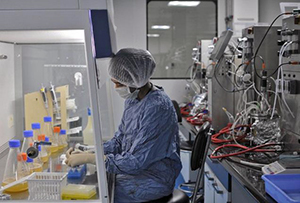New Delhi, Aug 8: Gujarat, which was ranked first among all States in 2015 for attracting maximum investment intentions' in value terms, has lost its position to Karnataka halfway through this calendar year.
Gujarat received investment intentions worth only Rs.21,309 crore during January-June 2016, while Karnataka — which topped the list — received over thrice that amount, or Rs.67,757 crore, during the same period, government data showed.
The Centre, which is co-ordinating efforts to rank states on ease of doing business', also maintains a State-wise break-up of investment intentions in terms of Industrial Entrepreneur Memoranda filed for de-licensed sector, Letters of Intent issued and Direct Industrial Licences granted.
Interestingly, the Rs.67,757 crore worth investment intentions received by Karnataka in the first six months of 2016 was more than the Rs.64,733 crore that Gujarat had attracted in the whole of 2015, the year when it topped the all-India list in this regard.
Investors meet
The Rs.64,733 crore-worth investment intentions Gujarat got was 20.81 per cent of the total investment intentions worth Rs.3,11,031 crore that India received in 2015. However, out of the Rs.1,76,738 crore worth proposed investments that India received in January-June 2016, the share of Gujarat declined to 12.06 per cent — or Rs.21,309 crore. Meanwhile, Karnataka's share jumped from 10.18 per cent (or Rs.31,668 crore) in 2015 to 38.34 per cent (or Rs.67,757 crore) in January-June 2016. Karnataka said Invest Karnataka 2016', an investors' meet held during February 3-5 this year, concluded with 1,201 approved projects and MoUs valued at Rs.3.08 lakh crore.
Other leading States in terms of investment intentions' during January-June 2016 were Maharashtra (Rs.15,688 crore), Telengana (Rs.13,600 crore) and Chhattisgarh (Rs.8,514 crore). In 2015, the States in the top five after Gujarat were Chhattisgarh (Rs.36,511 crore), Maharashtra (Rs.33,277 crore), Karnataka (Rs.31,668 crore) and Odisha (Rs.24,524 crore).
Even in the latest Business Reforms Action Plan' index (or measures taken by states to improve ease of doing business), Gujarat was sixth with a score of 53.98 per cent. Uttarakhand topped that dynamic implementation scorecard' with 63.72 per cent, followed by Rajasthan, Telengana, Chhattisgarh and Andhra Pradesh. Gujarat government officials rejected apprehensions that incidents (which even led to changes at the Chief Minister-level) — including the Patidar agitation for reservation and more recently, Dalit protests after some of them were reportedly attacked for allegedly skinning cow carcasses — are leading to lower investor interest in Gujarat.
“These numbers (on investment intentions) keep going up and down. Some big announcements could come up soon and the situation can change,” a senior Gujarat government official said, indicating that some major decisions are likely in the run-up to the Vibrant Gujarat Global Investors' Summit that is slated to be held during January 10-13 next year.
Most of the investment intentions that Gujarat has received are getting converted into amount that is actually being spent on the ground, the official said.





Comments
we need development only.....good governence
If there is no sangha pariwar goondasm in Mangalore, we would been the top district in terms of development. Now investors are feared to come to our district because of these Rss sponsored terrorists.
Fabulous job CM Siddaramayya....keep going Sir! May God help you....Gujarath was not shining whereas Feku was just cheating....
Add new comment